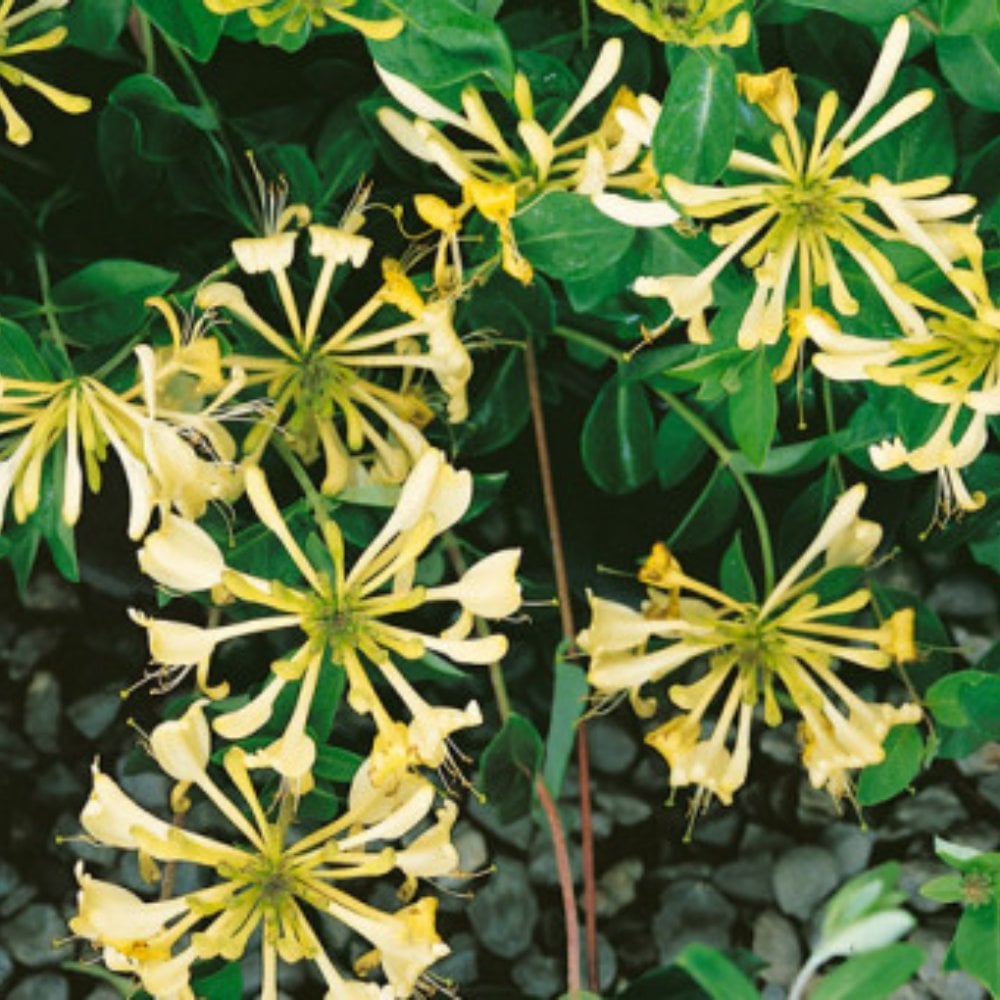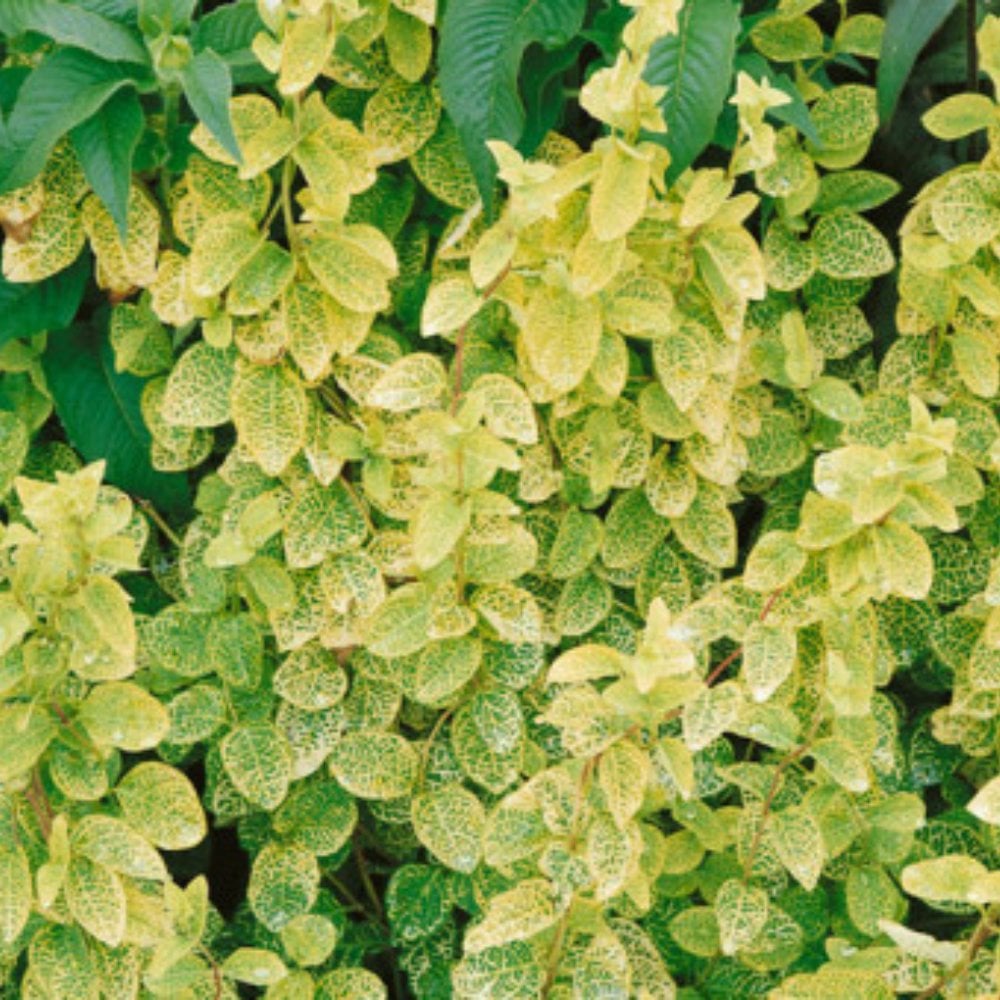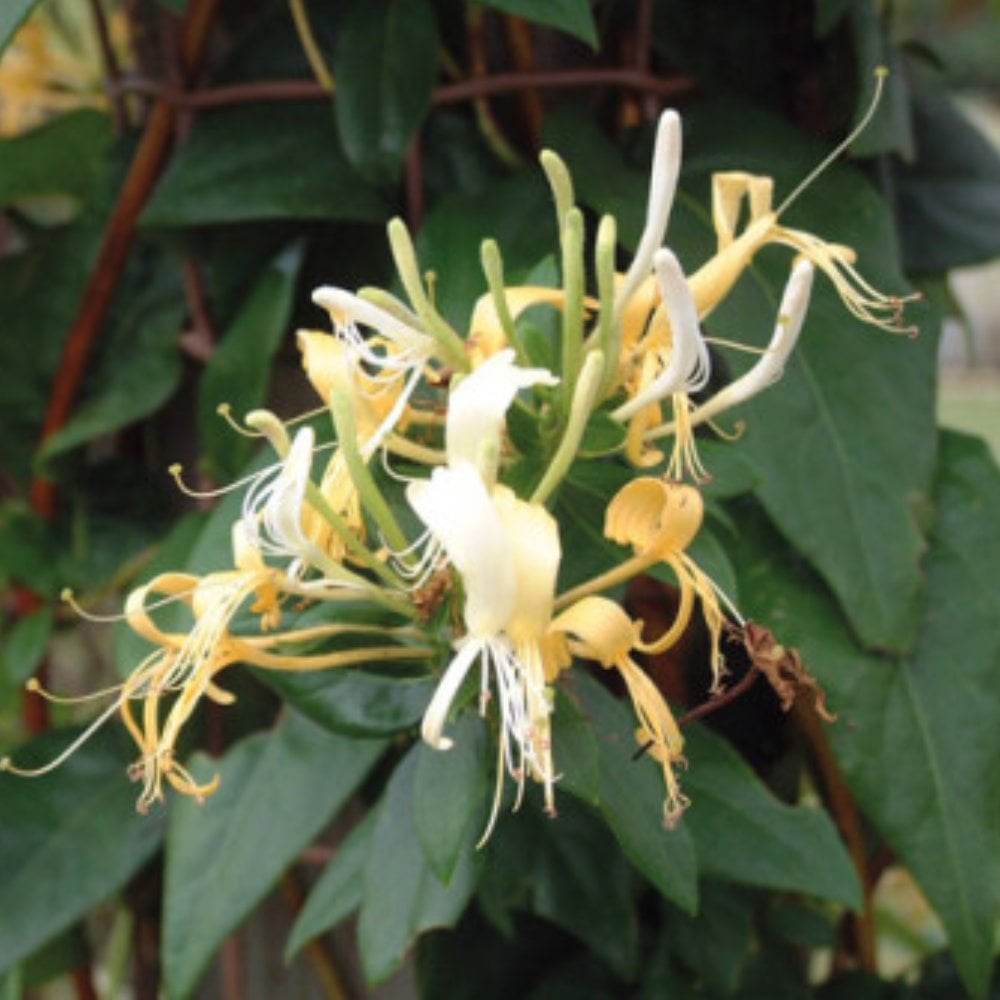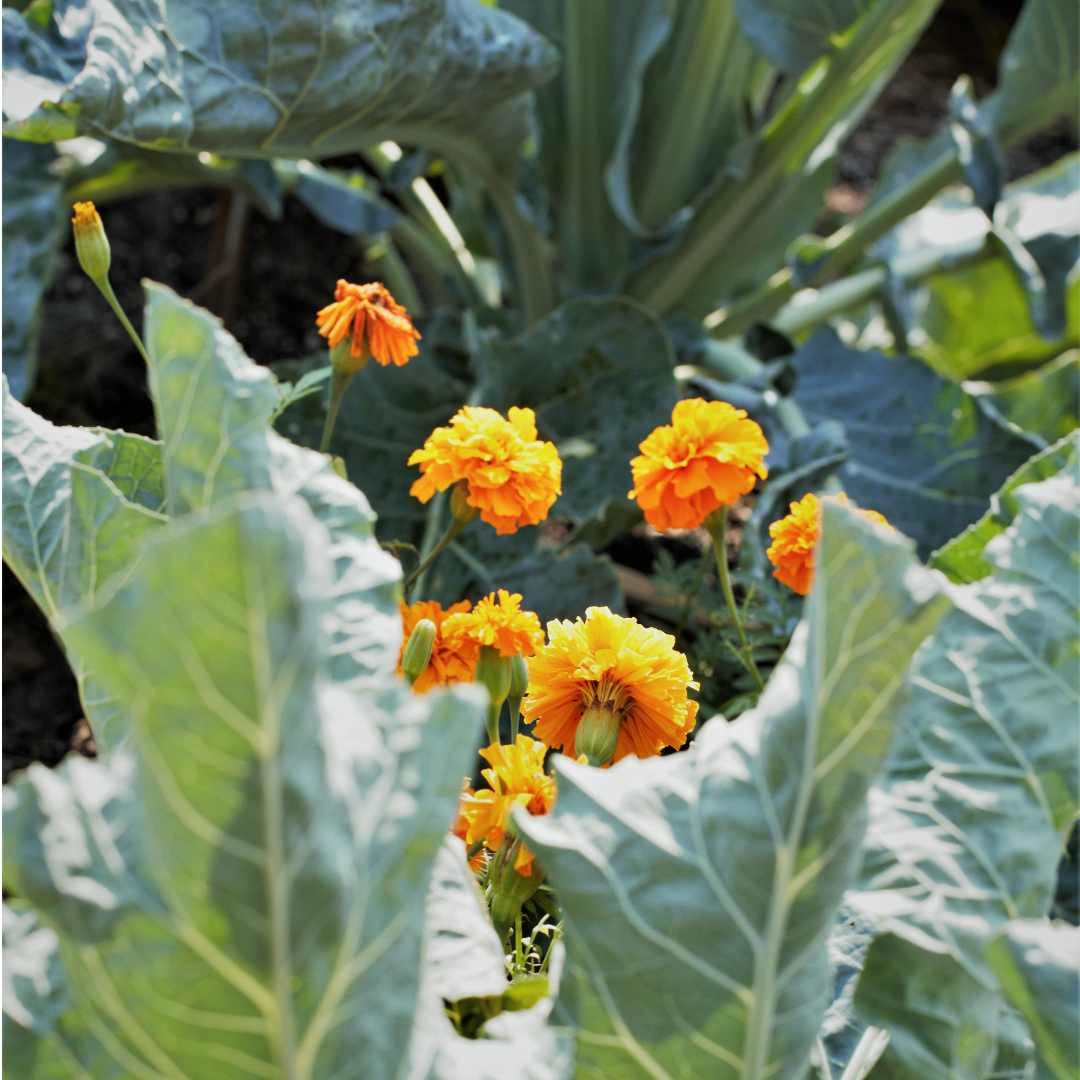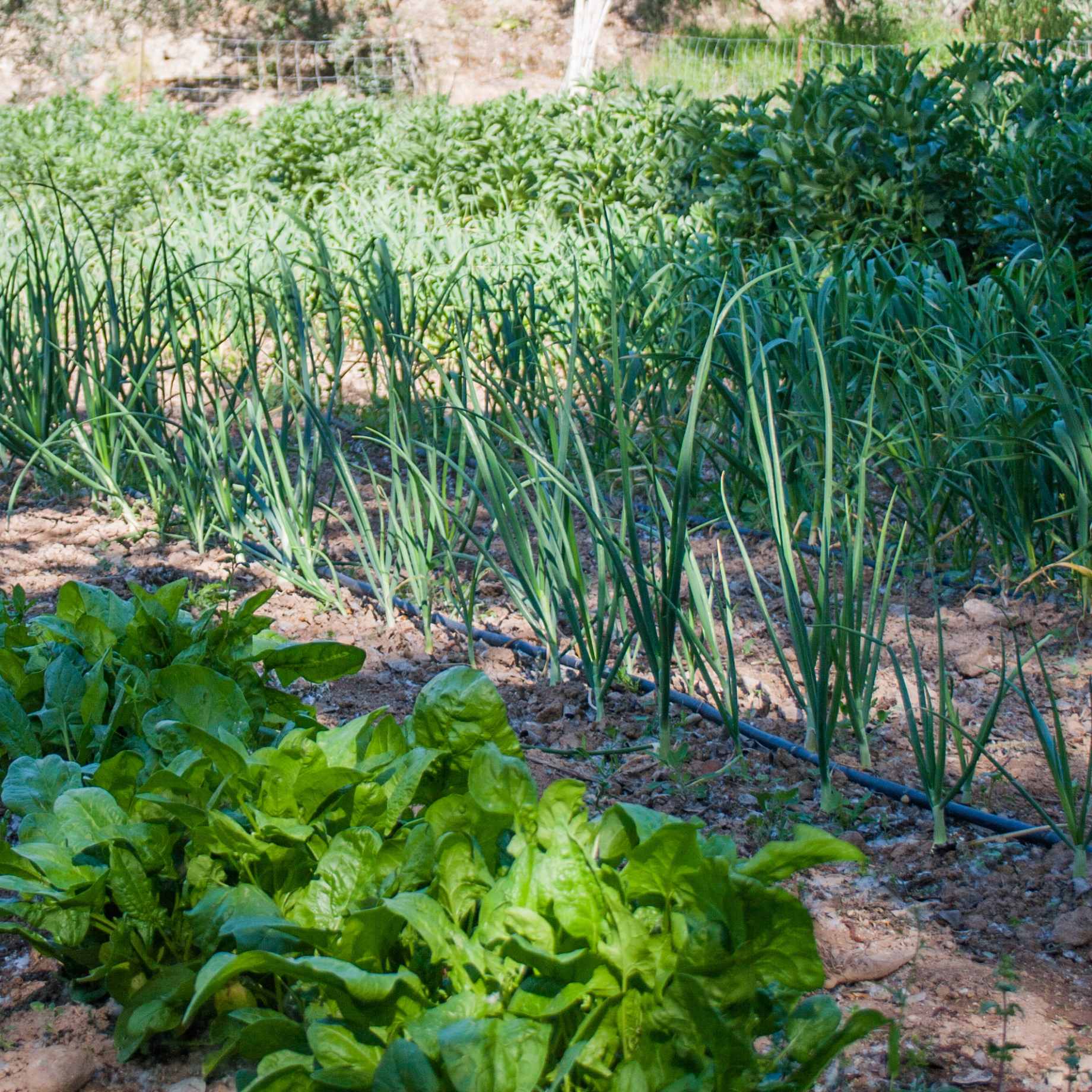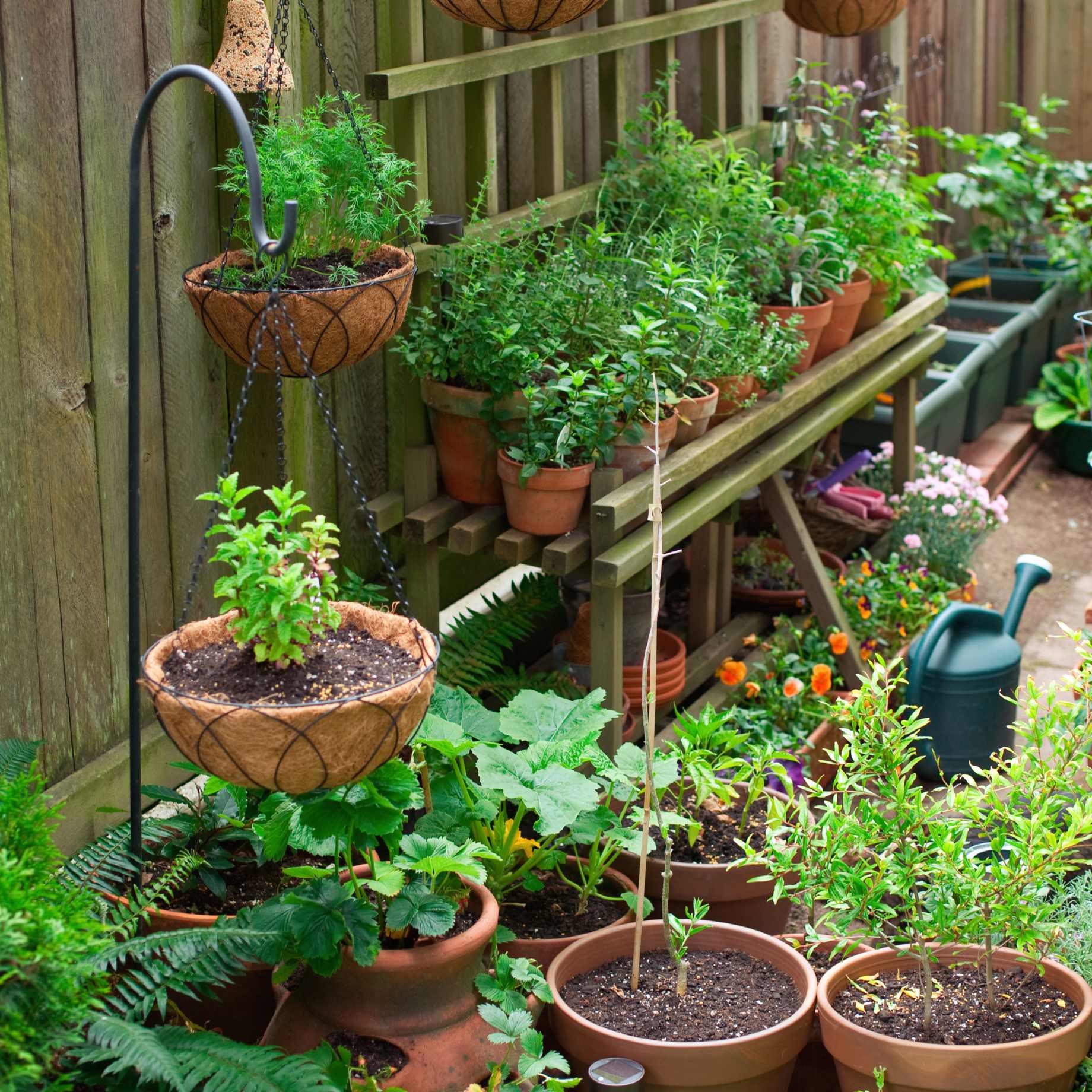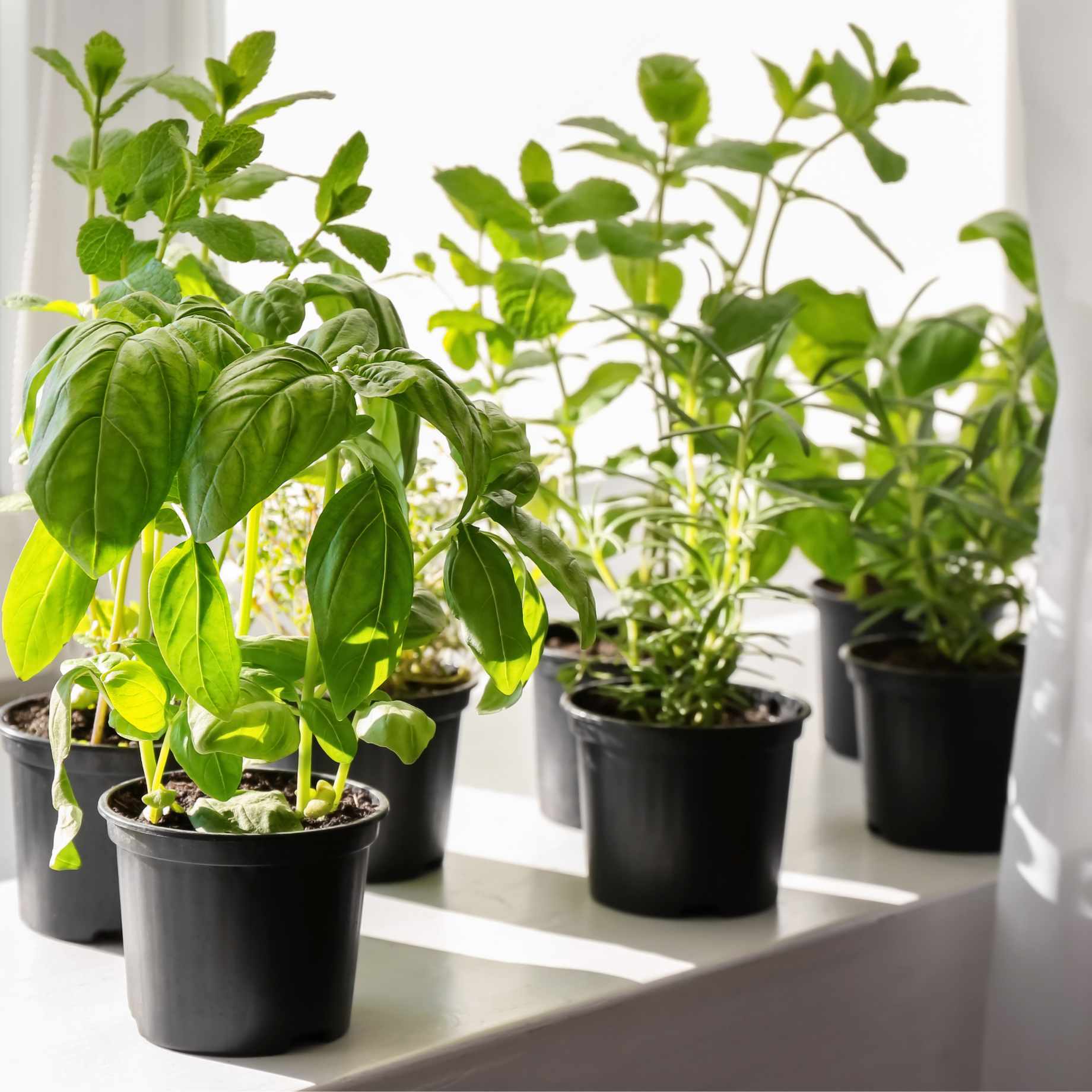Key features
AwardsRHS Award of Garden Merit
Final size7 x 1.5 metres in 20 years
FlowersLarge scented cream/yellow flowers in summer
PositionFull sun to part shade
SoilPrefers moist yet well-draining soil
Description
Lonicera periclymenum ‘Graham Thomas’ is a popular, fast-growing Honeysuckle climbing plant with creamy white flowers that take on shades of yellow when mature. Easy to grow, this Honeysuckle has won the RHS Award of Garden Merit, and makes a very attractive feature when planted against a sturdy climbing support, such as a trellis or obelisk. It is one of the larger varieties, reaching an approx. height and spread of 7 x 1.5 metres in 20 years.
The flowers are an abundant source of nectar, so this Honeysuckle is a great option for attracting more bees and other essential pollinators into the garden, having received RHS Plants for Pollinators status. ‘Graham Thomas’ can also produce small, bright red berries in late summer through to autumn.
AKA Honeysuckle ‘Graham Thomas’, Lonicera ‘Graham Thomas’
Planting Steps
1Preparation
- Pot-grown plants can be planted at any time of year, whereas bare roots need to be planted between November and March.
- Clear weeds and grass within a metre of the planting hole.
- Dig a hole as deep as the root mass and twice as wide.
- To help your plant establish more effectively, sprinkle Rootgrow in the hole.
2Planting
- Gently loosen the roots and place into the planting hole.
- Ensure the top of the plant’s compost is flush with the level of the surrounding soil and the graft union or collar of the tree is above ground level.
- Mix 50% of the original soil with 50% compost.
- Fill in the hole, firming the soil gently.
3Last Steps
- Water generously around the base of the plant.
- If you are planting either a single stem tree or mature standard tree, we recommend adding a staking kit and rabbit guard.
Aftercare Advice
Trees and shrubs require a good watering regime for a couple of years whilst they establish. Water well and regularly through spring and summer, increasing in hot or dry weather. If planting in autumn, you may only need to water a little. It is advisable to keep the area free of competing weeds and grass during this period.
For more detailed advice and video guides, please visit our Help & Advice section.

